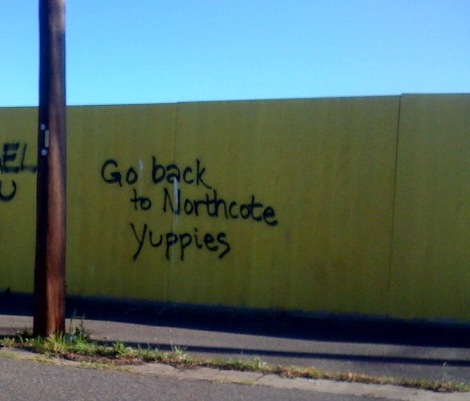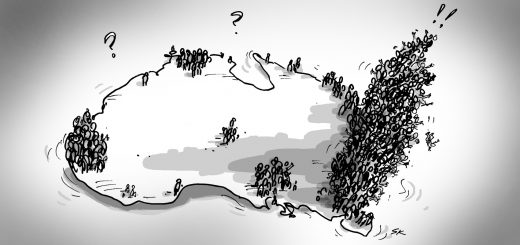Australia’s fastest growing areas are mostly in our capital cities
Glenn shares the highlights from the recent release of new population figures for local areas, reviewing how the population of our Capital Cities and fastest-growing Local Government Areas changed in the year to 30 June 2019.
Last week the ABS released their annual update on local populations (Regional Population Growth), which comes out in March every year, relating to the previous June 30th. So these figures are for June 30th, 2019, and represent the third annual update since the 2016 Census. They are of course subject to revision after the next Census data are released in 2022.
So what do the figures show?
We already knew that Victoria remains the fastest-growing state, but these figures provide some insight into how this plays out in Melbourne. Basically, Melbourne is the fastest-growing of our state capitals (using the Greater Capital City boundaries), with a growth rate of 2.3%, and adding over 113,000 people in the last financial year. Overall, capital cities accounted for almost 80% of Australia’s annual population growth in 2018-19.
|
|
ERP at 30 June 2019 | 1-year increase | 1 year % increase | |
| Sydney | 5,312,163 | 87,065 | 1.7% | |
| Melbourne | 5,078,193 | 113,480 | 2.3% | |
| Brisbane | 2,514,184 | 52,587 | 2.1% | |
| Adelaide | 1,359,760 | 13,900 | 1.0% | |
| Perth | 2,085,973 | 27,405 | 1.3% | |
| Hobart | 236,136 | 3,445 | 1.5% | |
| Darwin | 147,255 | -1,141 | -0.8% | |
| Canberra | 426,704 | 6,325 | 1.5% | |
| Total capital cities | 17,160,368 | 303,066 | 1.8% |
Source: ABS, Regional Population Growth, Australia, 2018-19
Brisbane also grew strongly, at 2.1%, now exceeding 2.5 million (note that this is Greater Brisbane, not the City of Brisbane, and includes Logan, Ispwich, Redland and Moreton Bay areas). Darwin’s population, along with the NT’s generally, continues to decline slightly. Perth’s population growth has picked up to 1.3% but now accounts for almost 100% of Western Australia’s growth. Tasmania’s boom continues to be driven by Hobart, with 1.5% growth now equaling the national average after years of static or declining population.
If this trend continues, we can expect to see Melbourne overtake Sydney as Australia’s largest city around 2027-2028, when both would have a population close to 6 million.
This release also updates the population for all of Australia’s Local Government Areas, and we are working to get the new dataset into the community and economic profile sites for our clients.
What are the fastest-growing Local Government Areas in Australia?
Here are Australia’s fastest-growing LGAs (by percentage growth, for the 2018-19 period)
| Local Government Area | 2018 pop | 2019 pop | Change | % change |
| Camden (NSW) | 94,029 | 101,437 | 7,408 | 7.9% |
| Wyndham (Vic) | 255,367 | 270,487 | 15,120 | 5.9% |
| Serpentine-Jarrahdale (WA) | 30,927 | 32,562 | 1,635 | 5.3% |
| Melton (Vic) | 156,718 | 164,895 | 8,177 | 5.2% |
| Melbourne (Vic) | 170,317 | 178,955 | 8,638 | 5.1% |
| Cardinia (Vic) | 107,117 | 112,159 | 5,042 | 4.7% |
| Ipswich (Qld) | 213,568 | 222,307 | 8,739 | 4.1% |
| Hume (Vic) | 224,423 | 233,471 | 9,048 | 4.0% |
| Mitchell (Vic) | 44,298 | 46,082 | 1,784 | 4.0% |
| Strathfield (NSW) | 45,110 | 46,926 | 1,816 | 4.0% |
| Perth (WA) | 27,720 | 28,832 | 1,112 | 4.0% |
Source: ABS, Regional Population Growth, Australia, 2018-19
A few interesting points about these areas:
- All but one of these 10 areas are in capital cities. Mitchell Shire is the exception, and it straddles the border between Melbourne and Regional Vic (with most growth being in the metro area).
- Camden in south-west Sydney has topped the list for the second year as the fastest growing LGA in Australia.
- Two inner-city areas (Perth and Melbourne) are represented. The others are all on the urban fringe.
- 6 of the top 10 are in Victoria, continuing the dominance of Vic in the population growth statistics over the past few years generally.
- 9 of the 10 fastest growing areas in Australia have .id’s Community Profile!
But “fast” growth isn’t everything. The smaller the population of the area, the easier it is to have a high percentage growth, simply by virtue of having a smaller population to begin with. You can see on this list, Serpentine-Jarrahdale makes it into #3 by virtue of the smaller population. It added only 1,635 people, but that’s a high percentage of existing population.
Looking at the largest numerical growth…
| Local Government Area | 2018 pop | 2019 pop | Change | % change |
| Brisbane (Qld) | 1,230,938 | 1,253,982 | 23,044 | 1.9% |
| Wyndham (Vic) | 255,367 | 270,487 | 15,120 | 5.9% |
| Gold Coast (Qld) | 606,528 | 620,518 | 13,990 | 2.3% |
| Casey (Vic) | 340,443 | 353,872 | 13,429 | 3.9% |
| Moreton Bay (Qld) | 459,456 | 469,465 | 10,009 | 2.2% |
| Hume (Vic) | 224,423 | 233,471 | 9,048 | 4.0% |
| Ipswich (Qld) | 213,568 | 222,307 | 8,739 | 4.1% |
| Melbourne (Vic) | 170,317 | 178,955 | 8,638 | 5.1% |
| Sunshine Coast (Qld) | 319,837 | 328,428 | 8,591 | 2.7% |
| Blacktown (NSW) | 366,078 | 374,451 | 8,373 | 2.3% |
| Melton (Vic) | 156,718 | 164,895 | 8,177 | 5.2% |
Brisbane, as the largest LGA in Australia ALWAYS tops the list of the largest growth, though its growth rate is only a little more than the national average. But 4 of the top 10 largest growth areas actually appear on both lists.
We are working to get the new population data onto .id’s community and economic profiles as soon as possible. If you subscribe to our Product Updates, you’ll be notified when this occurs.
Next in this series of blogs, we’ll look at areas of population decline and stability in Australia.








People often mention ”Greater Brisbane” – but what about the populations of Sydney, Melbourne and Perth – are they ALL from literally government regions known as Sydney, Melbourne and Perth – or, are they too made up ”greater” areas? Of course they are.
The Greater Capital City Statistical Areas contain far more than the LGAs of the same name. Since 2011 with the advent of the ASGS, they aren’t defined by groupings of LGAs any more, but groupings of SA2s, so they can contain part LGAs around the fringe. For instance, Greater Melbourne contains 30 whole LGAs plus parts of another 5 LGAs. The reason I think it comes up for Brisbane more than the others is that most capital city LGAs are just a small area around the CBD – while Brisbane contains a large part of the metropolitan population, and a few decades ago the LGA would have been considered to cover the whole metropolitan extent – which was never really the case with Sydney, Melbourne or Perth.